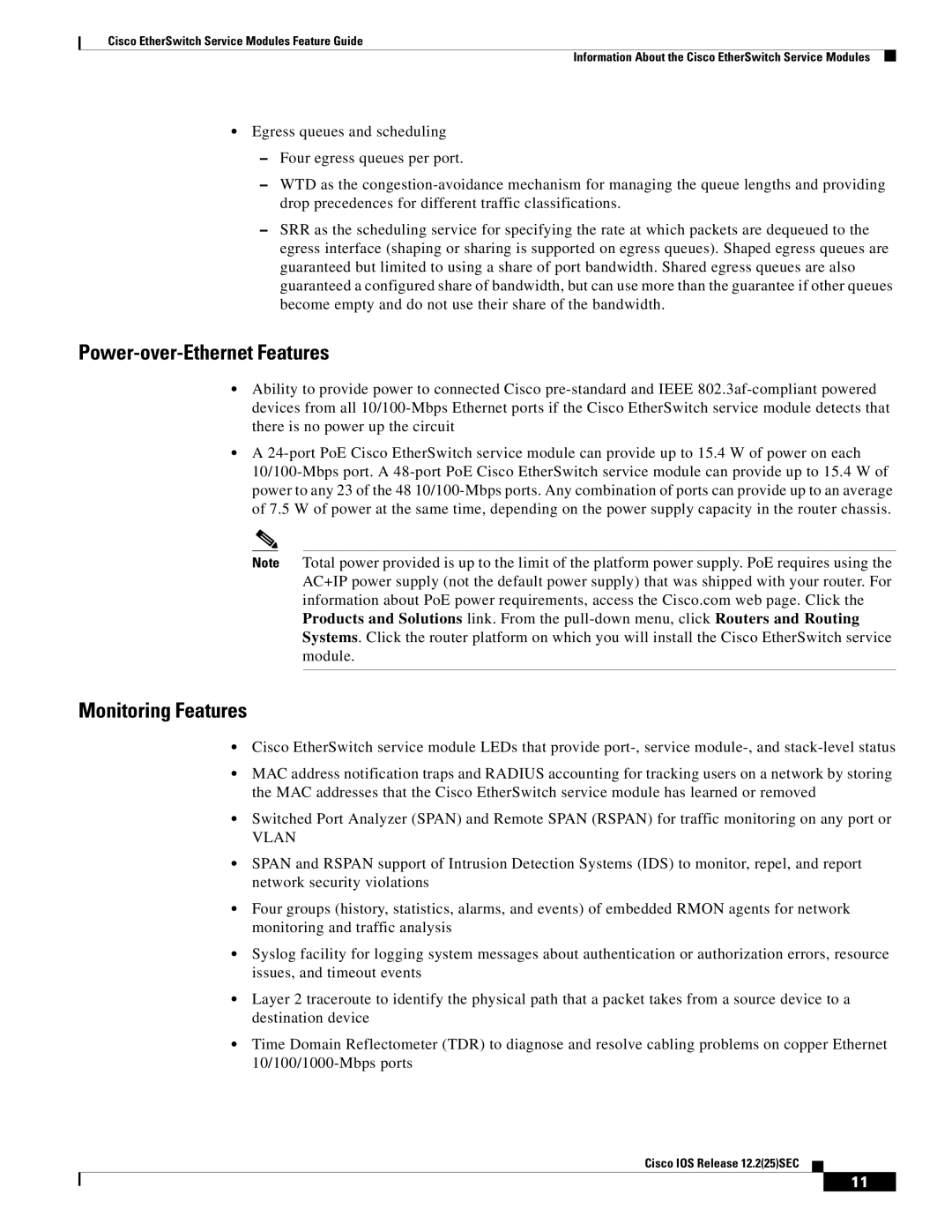
Cisco EtherSwitch Service Modules Feature Guide
Information About the Cisco EtherSwitch Service Modules
•Egress queues and scheduling
–Four egress queues per port.
–WTD as the
–SRR as the scheduling service for specifying the rate at which packets are dequeued to the egress interface (shaping or sharing is supported on egress queues). Shaped egress queues are guaranteed but limited to using a share of port bandwidth. Shared egress queues are also guaranteed a configured share of bandwidth, but can use more than the guarantee if other queues become empty and do not use their share of the bandwidth.
Power-over-Ethernet Features
•Ability to provide power to connected Cisco
•A
Note Total power provided is up to the limit of the platform power supply. PoE requires using the AC+IP power supply (not the default power supply) that was shipped with your router. For information about PoE power requirements, access the Cisco.com web page. Click the Products and Solutions link. From the
Monitoring Features
•Cisco EtherSwitch service module LEDs that provide
•MAC address notification traps and RADIUS accounting for tracking users on a network by storing the MAC addresses that the Cisco EtherSwitch service module has learned or removed
•Switched Port Analyzer (SPAN) and Remote SPAN (RSPAN) for traffic monitoring on any port or
VLAN
•SPAN and RSPAN support of Intrusion Detection Systems (IDS) to monitor, repel, and report network security violations
•Four groups (history, statistics, alarms, and events) of embedded RMON agents for network monitoring and traffic analysis
•Syslog facility for logging system messages about authentication or authorization errors, resource issues, and timeout events
•Layer 2 traceroute to identify the physical path that a packet takes from a source device to a destination device
•Time Domain Reflectometer (TDR) to diagnose and resolve cabling problems on copper Ethernet
Cisco IOS Release 12.2(25)SEC
11
